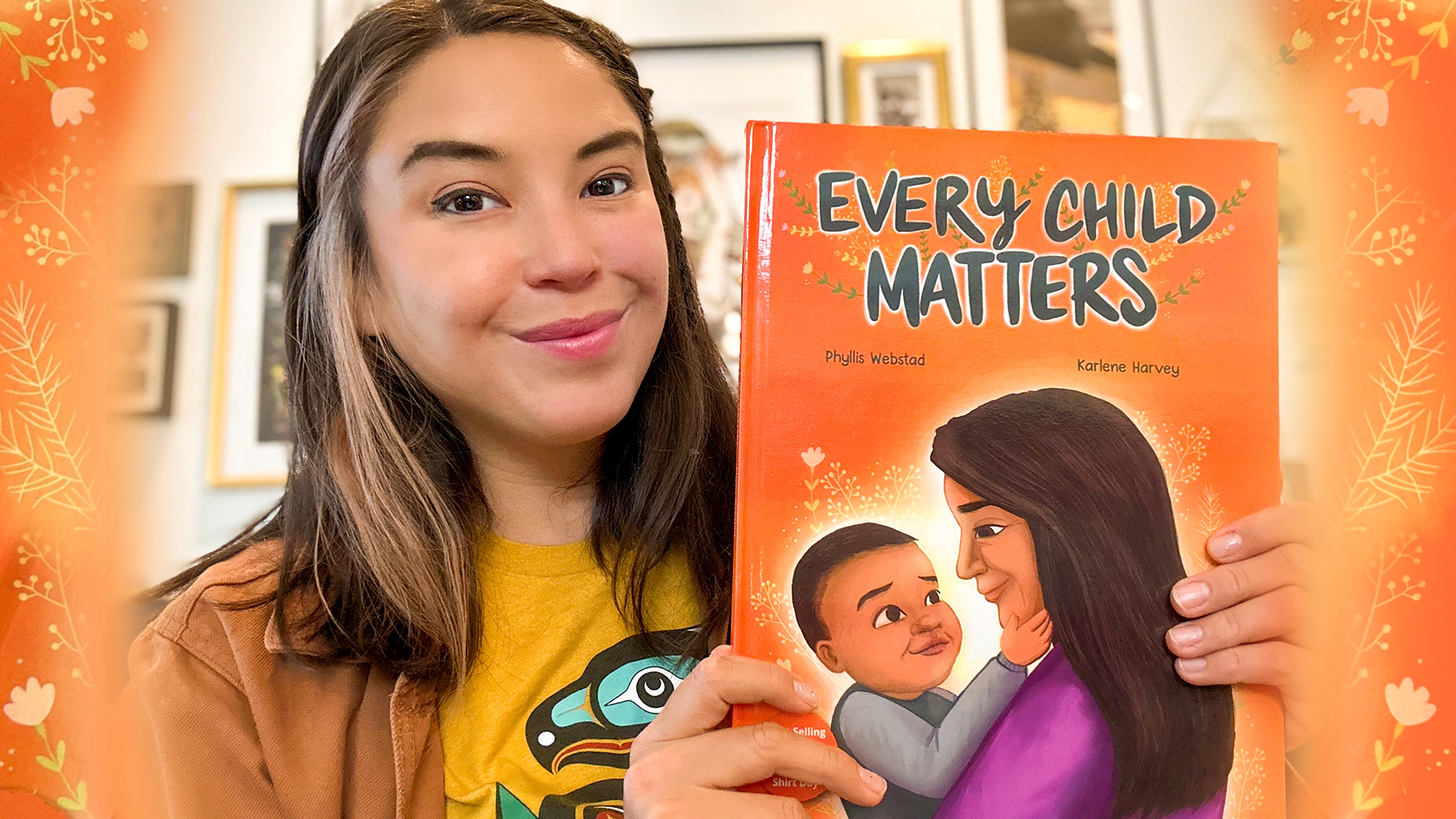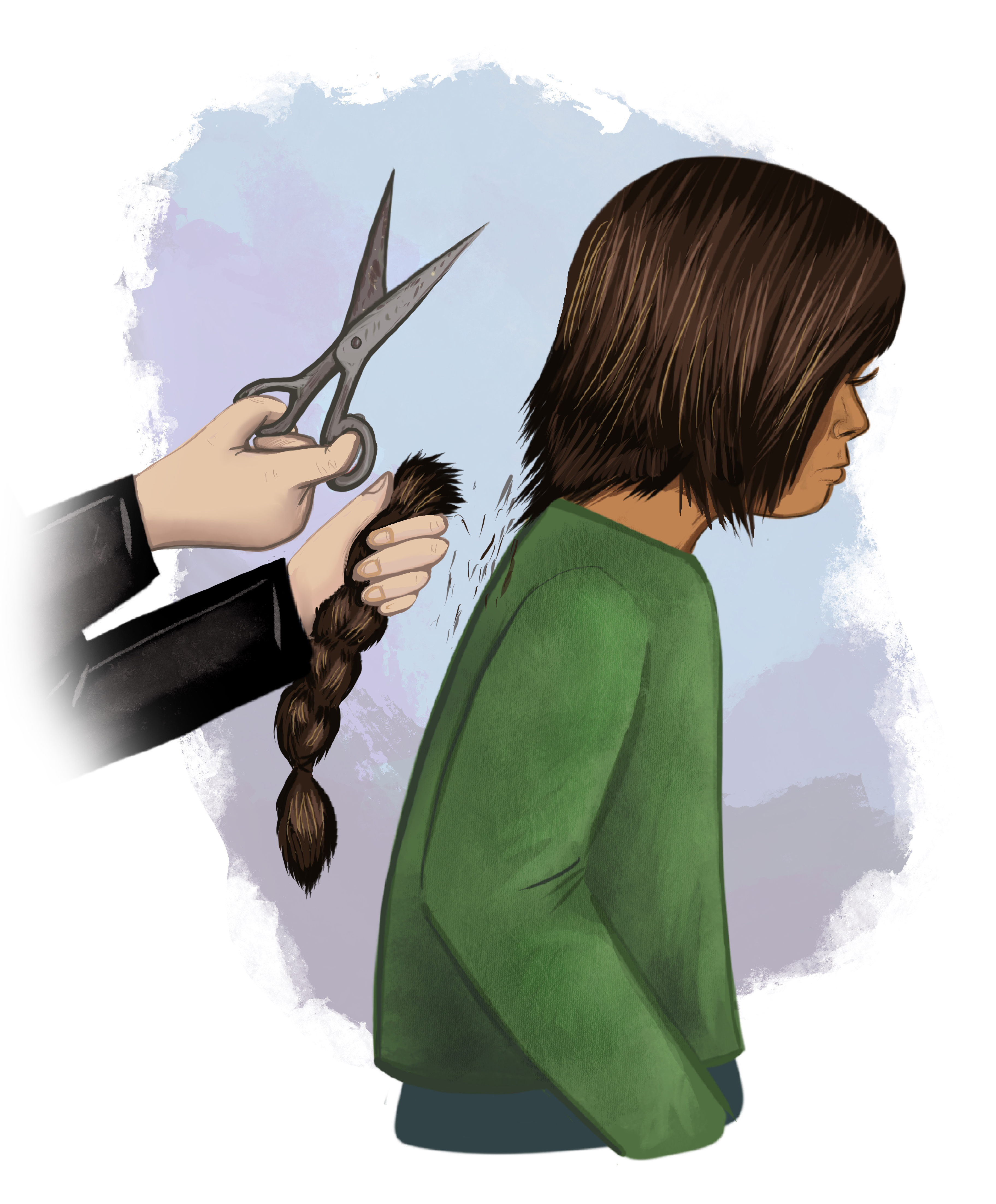

Illustrator of Every Child Matters picture book Karlene Harvey
When you hear the phrase “Every Child Matters” what comes to mind? According to the illustrator of the new Every Child Matters picture book, Karlene Harvey, “Every Child Matters empowers residential school survivors to speak about their childhood, and to acknowledge their experiences on their own terms, which is extremely validating and important. As a daughter of a residential school survivor my heart heals when I see my family and community reclaim their story, when they feel free to express their thoughts and reflections.”
September 30 marks the National Day for Truth and Reconciliation and Orange Shirt Day. Karlene (she/they) is Tsilhqot’in and Syilx and grew up on the territories of Semiahmoo and Kwantlen Nations. Outside of their role as an Academic Advisor within the Faculty of Arts Indigenous Student Advising, they are an illustrator and writer. In celebration of September 30, we connected with them to learn about their experience developing illustrations for the Every Child Matters picture book, their creative journey, and tips for aspiring Indigenous artists.
Can you tell us a bit about the project and how you became the lead illustrator for the picture book?
I was selected as the illustrator due to my connection with Teddy Anderson who is the founder of Medicine Wheel Publishing. He originally came across my work a few years ago because I was creating illustrations regarding “Orange Shirt Day” and posting them on social media. I believe we originally connected on Instagram. Later that year, Kaitlyn Stampflee, creative director at Medicine Wheel Publishing, reached out to me to work on a children’s picture book titled, Drum from the Heart. That book received great acclaim and it landed at #16 on the BC Best Selling books in 2022. Due to that previous book project, Teddy had me in mind for the children’s picture book Every Child Matters, written by Phyllis Webstad.


What does it mean to you to have worked on the Every Child Matters book?
It was a whirlwind project that I was happy to be a part of. Phyllis Webstad is the founder of Orange Shirt Day and so her stories about residential school and cultural healing are very real and honest. I felt like I needed to follow her vision to ensure that the visual aspect of the story honoured her words. It’s also a topic that I feel really strongly about because my mother and her side of the family attended residential school.
“As a social movement, the message of ‘Every Child Matters’means a lot to residential school survivors; I have seen how meaningful it is amongst my entire extended family.”


Pages six and seven from the Every Child Matters picture book. Illustrations by Karlene Harvey.
Who or what inspired you to pursue art and illustration?
Most of my family would tell you that I’ve always been a creative kid. Growing up, I loved animated television shows and comic books. I found a lot of inspiration from visual storytelling and I would often spend my time drawing comics and creating page-stapled storybooks. You could frequently find me drawing at the kitchen table, in the car on a road trip, or on a paper placemat at a restaurant with my family. It was no surprise to anyone when I chose to study visual arts during my undergraduate degree.
But it’s been over the last 8 years or so since I decided to make a dedicated plan to pursue children’s book publishing. In 2016, I attended the Vancouver Arts and Comic Books festival and I had a chance to talk shop with a lot of the artists who were tabling at that event. I was inspired by all of the artwork that I saw and I noticed many of the artists were drawing on tablets. It was after that event that I decided to make the jump to drawing digitally via a Wacom tablet and later on, an iPad. Shifting to a digital art practice has been an invaluable step toward my creative output.
How are publishers increasing the diversity of voices and images that they choose to publish?
It’s a question that I think about a lot, especially following my graduate degree which focused on Indigenous literature. I am keen to support Indigenous publishing houses such as Theytus Publishing. There are cultural values rooted in these companies that do not centre their objective on a profit margin but instead on the question of, how are Indigenous stories being told and who gets to tell them. The mission of these publishers come from a culturally centred place and I think that books supported by independent Indigenous publishers are so important.
It’s also really important that larger publishers consider how they approach Indigenous stories and develop better connections with Indigenous artists and writers. Especially because they have the funding and capacity to take on more projects than independent publishers. They also have a larger reach in terms of how these books are disseminated, especially amongst educators and libraries. Over the last couple of years, I’ve had the incredible good fortune to begin working with a few different publishers and it’s been extremely exciting to learn more about the publishing industry with each project. I’ve been impressed by the amount of support that I’ve been given on various projects, to depict characters or settings in a way that feels true to the Indigenous youth and Indigenous communities that I’m familiar with.


Pages ten and eleven from the Every Child Matters picture book. Illustrations by Karlene Harvey.
What advice would you give to Indigenous youth looking to explore the field of illustrating or the publication industry?
1) Create a consistent drawing practice, draw every day.
While honing your craft, try and work on subject matter that is unfamiliar so that you’re always rounding out your style. Think about what makes your work different, and choose themes or ideas related to your identity. For instance, draw a series of your family going dip-netting together, attending a cultural event with your sibling, or visiting with your grandparents. Having an individual and unique perspective is what makes your illustrations so meaningful.
2) Look for literary or artist events in your town and remember to check out your local library for various speaker series.
Familiarize yourself with the literary community whatever that might look like in your town or city. There are also a lot of online talks and panels available, whether it’s live events or archived talks on YouTube.
3) Submit your work to independent magazines.
Look up zines or online news blogs or independent print magazines and submit your portfolio. A few that I would recommend include Indigenous Brilliance through Room Magazine; Guts Magazine; and Briarpatch Magazine. It can be very nerve-racking to share your work at first but it’s an incredibly important step to building up your self-confidence as an artist.


